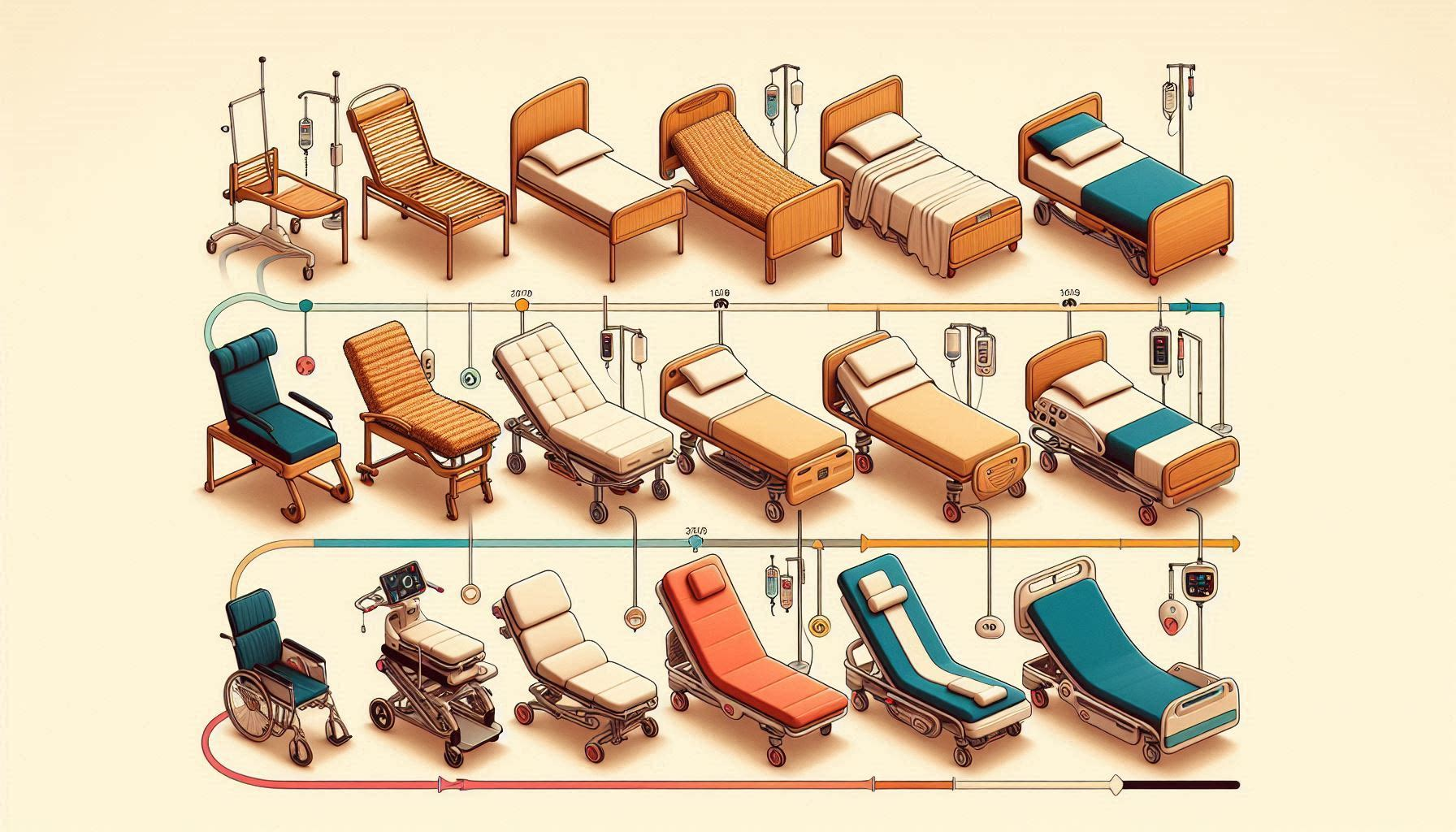The hospital bed, a cornerstone of patient care, has undergone a remarkable transformation over the years. As hospital bed manufacturers continue to innovate, these essential pieces of medical equipment have evolved from simple resting places to sophisticated mobility aids that significantly enhance patient comfort, safety, and recovery. This blog explores the fascinating journey of hospital bed development, highlighting the key advancements that have shaped modern healthcare.
The Early Days: Basic Comfort and Functionality
In the early 20th century, hospital beds were rudimentary structures designed primarily for rest. These beds, often made of iron frames with basic mattresses, offered little in terms of adjustability or patient mobility. Hospital bed manufacturers of the time focused on durability and ease of cleaning, with patient comfort as a secondary consideration.
The Introduction of Manual Adjustability
The first major leap in hospital bed design came with the introduction of manual adjustability. Cranks and levers allowed caregivers to elevate the head and foot sections of the bed, providing patients with more comfortable positions for eating, reading, or receiving treatments. This innovation marked the beginning of a new era in patient care, where bed design started to consider the diverse needs of patients beyond mere rest.
The Rise of Electric Hospital Beds
The advent of electric motors in hospital beds during the mid-20th century revolutionized patient care. Hospital bed manufacturers began incorporating electric systems that allowed for effortless adjustments at the touch of a button. This not only improved patient comfort but also reduced the physical strain on healthcare workers who previously had to manually adjust beds.
The Smart Hospital Bed Revolution
The digital age has ushered in a new generation of hospital beds equipped with smart technologies. Modern hospital bed manufacturers are now incorporating advanced features such as:
- Wireless Connectivity: Allowing beds to transmit data directly to electronic health records.
- Touchscreen Interfaces: Providing intuitive control for both patients and caregivers.
- Automated Position Changes: Programmed movements to aid in pressure relief and circulation.
- Fall Prevention Technology: Using sensors to predict and prevent potential falls.
- Integration with Room Controls: Enabling patients to adjust lighting, temperature, and entertainment systems from their bed.
Focusing on Mobility and Rehabilitation
Recent innovations in hospital bed design have placed a strong emphasis on patient mobility and rehabilitation. Hospital bed manufacturers are now producing beds that:
- Convert to Chairs: Allowing patients to transition from lying to sitting positions easily.
- Incorporate Standing Assists: Helping patients move from a seated to a standing position safely.
- Feature Low Heights: Enabling patients to get in and out of bed more easily, promoting independence.
- Include Built-in Physical Therapy Tools: Such as resistance bands or exercise bars, facilitating in-bed rehabilitation exercises.
The Future of Hospital Beds
Looking ahead, hospital bed manufacturers are exploring cutting-edge technologies to further enhance patient care:
- AI-Powered Predictive Care: Beds that can predict patient needs based on movement patterns and vital signs.
- Virtual Reality Integration: Incorporating VR systems for patient entertainment and therapeutic purposes.
- Eco-Friendly Materials: Developing sustainable and recyclable components to reduce environmental impact.
- Modular Designs: Creating adaptable bed systems that can be easily modified to suit changing patient needs.
The evolution of hospital beds from simple resting places to advanced mobility aids is a testament to the innovative spirit of hospital bed manufacturers and their commitment to improving patient care. As technology continues to advance, we can expect even more revolutionary developments in hospital bed design, further enhancing patient comfort, safety, and recovery outcomes.
For healthcare facilities looking to upgrade their patient care capabilities, staying informed about the latest innovations in hospital bed technology is crucial. By partnering with forward-thinking hospital bed manufacturers, healthcare providers can ensure they’re offering their patients the very best in comfort, safety, and care.






